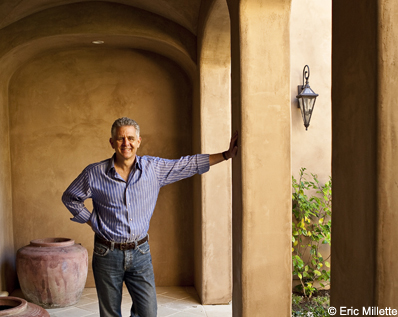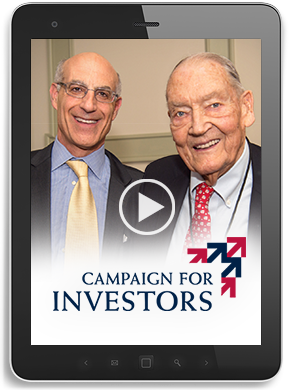Forbes: Do It Yourself Investing

Mitchell Tuchman has credentials that would open almost any door on Wall Street. Armed with a Harvard M.B.A., he spent seven years analyzing tech stocks for a hedge fund.
…Despite the pedigree and smarts he brought to the table, Tuchman came away convinced it’s a sucker’s game to try to beat the market. But plenty of financial planners and money managers rake off big fees just for trying.
“The fees that fund companies and wealth managers charge create inherent conflicts of interest,” Tuchman says. “It’s like cigarette makers in the 1930s trying to convince people that smoking was healthy.”
The problem with paying top dollar to money managers is that not everyone can beat the market. Pay ten stock pickers 1.3% of your assets a year, the average for equity mutual funds, and over the long haul you’re likely to lag the market by a similar amount. That 1.3% sounds small, but compounded over 30 years it’ll eat up 32% of your wealth.
Why do people strive after hot performance? First is the Lake Wobegon syndrome; illogic aside, most investors think they, or the stock picker they have found, are above average. Second are the lengths Wall Street goes to suck people into all manner of costly variations on plain old stocks and bonds. Here’s a four-step process for assembling a balanced portfolio that will keep your costs down and do as well as the average expert would if he charged no fees.
Step One: Set Objectives.
Decide what you’re trying to accomplish: put kids through college, retire comfortably, pass on a financial legacy–or some combination of the three. The next question is how to maximize the odds of achieving such goals.
With job losses, market gyrations and inflation, nobody can say definitively how to do it. Instead, test-drive a few financial-planning calculators. Good ones are available free on Web sites like sec.gov and AARP’s, as well as on those of fund firms such as Fidelity and Vanguard, and from brokers TD Ameritrade and E-Trade.
Most will have you plug in some data: how much you earn and save; the value of your financial assets, home and the like; and how long until you’ll need your money. Assuming you’re saving for retirement, you’ll also plug in the age at which you plan to quit working and the percentage of annual income you think you’ll need afterward.
Calculating whether you’re on track means making assumptions about how you’ll allocate assets and the returns they’ll yield. With allocation, start by typing in your current holdings. Then play with hypotheticals to see how they alter the outcome.
The main flaw with all such calculators, and all of their whiz-bang Monte Carlo simulations, is their assumption that the future will look like the past–an assumption whose flaws became obvious over the last year.
If you’re fortunate, the model will show that you’re living below your means and would have a high probability of achieving your objectives even if you spent more or took fewer risks. More likely it will indicate that you have some tough choices to make. It may scold you to save more, delay retirement or invest in riskier assets.
How risky should you get? A rule of thumb cited by John Bogle, Vanguard Group’s founder, is to hold a proportion of bonds that corresponds to your age. Thirty-year-olds should own 30% bonds and 70% stocks, with that evolving gradually to the opposite by age 70. But don’t let this formula stop you from reflecting on your tolerance for pain.
“It’s one thing to fill out a questionnaire saying how you’d feel if the market’s down 20% and another to live through it,” says Peter Crawford, a Charles Schwab spokesman.
Step Two: Implement Your Target Asset Allocation.
Build a portfolio that’s low cost, easy to maintain and tax efficient. That means putting a good chunk of it–maybe all–in passive index portfolios. You can use no-load index funds or exchange-traded funds or a mix. For something as mainstream as the S&P 500 you have lots of choices: Fidelity, Schwab and Vanguard all have no-loads with annual fees in the neighborhood of 0.1%, and the biggest ETF (SPDR S&P 500) is just as cheap. As you veer off into specialized portfolios (such as one tracking the Dow Jones Islamic Market or one owning a basket of commodities), costs climb, and often an ETF is your only option.
Alternative: Try to beat the market with an actively managed fund. You might succeed, but it’s a swim upstream. Actively managed fund costs typically run between 1% and 1.5% of assets annually.
You can own real estate investment trusts directly or via index funds. Gold, the classic inflation hedge, is easiest to own through an ETF; the SPDR Gold Shares fund costs 0.4% a year.
Step Three: Think About Taxes.
The best strategy for most investors is to fill their taxable accounts with stock index funds. With luck these will grow over time, capital gains will be for the most part unrealized and whatever capital gains are distributed will be taxed at not much more than the current 15% rate. The rate goes to 20% in January 2011 under present law.
Naturally you put your high-income REITs and taxable bonds into your tax-deferred accounts, like iras. If you don’t have enough capacity in your retirement accounts to hold your full complement of fixed-income investments, buy high-grade municipal bonds (or a fund of munis) for your taxable accounts.
A somewhat better but more labor-intensive strategy for your taxable account is to buy several sector funds or ETFs instead of broad index funds. Then, when some fall in value, sell them (and only them), banking the tax losses. Losses can absorb any amount of capital gains plus up to $3,000 a year of ordinary income. Stay out of the loser positions for 31 days to avoid the rule against “wash sales.” While you’re out, you can either move into a similar (but not too similar) investment or stay in cash and pray that the market does not go up.
You can follow a similar path overseas. Vanguard’s ftse All-World ex-US Index Fund costs 0.4% a year. Or you can buy country- or region-specific funds or ETFs and harvest tax losses along the way.
Step Four: Rebalance.
Whatever asset allocation you decided on, and however you decide it should evolve over time, put it in writing–then promise yourself you’ll stick to it even in bad times. A prime example of the cost of failing to do so occurred last spring when the stock market was hitting its postcrash lows. Those who bailed out missed the 62% rebound that has followed.
Asset allocation is not an exact science, so it’s probably sufficient to rebalance once a year. Set up an online account with a discount brokerage or fund firm and you’ll get the analytics to drill down to what you own where.
Other options include online services like Market Riders*. Run by Mitch Tuchman, the former hedge fund analyst, it lets users input holdings and a target asset allocation and alerts them via e-mail when an asset class becomes more than a certain percentage out of whack. Fund-rater Morningstar offers Instant X-Ray, which lets you know where your money is and whether stock holdings in various industries are over- or underweight versus the market.
With any good tool it should be fairly simple to figure out what you need to sell and buy during your annual rebalancing. The process can be lightened even further by monitoring your allocations throughout the year and adding new savings to the areas where you’re light.
* Rebalance shares the same investment platform as MarketRiders.






